Nothing quite compares to the feeling of slipping into naturally heated water that has bubbled up from deep within the earth, carrying minerals and warmth from places no human has ever seen. Thermal baths fed by natural hot springs offer something that no artificially heated pool can replicate—a direct connection to the planet’s geological forces and the therapeutic benefits that have drawn people to these waters for thousands of years.
These aren’t just places to get clean or exercise; they’re natural pharmacies where the earth itself prescribes the treatment. Here is a list of 20 thermal baths fed by natural hot springs that offer unforgettable soaking experiences around the world.
Blue Lagoon, Iceland
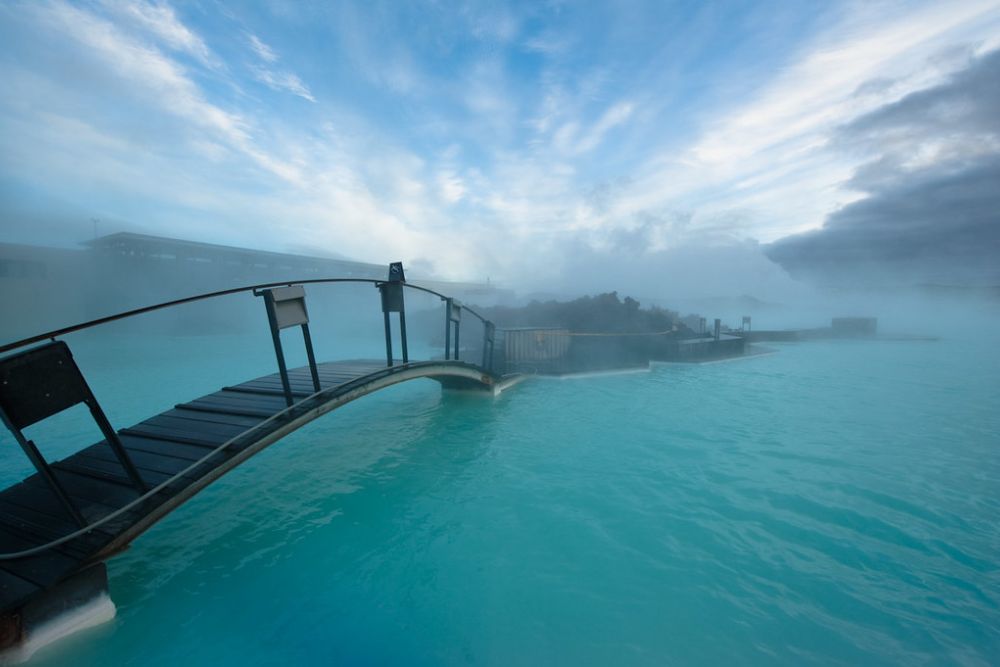
This otherworldly geothermal spa sits in the middle of a black lava field on Iceland’s Reykjanes Peninsula, where superheated seawater emerges from 6,500 feet underground at temperatures reaching 240°F. The water gets its distinctive milky blue color from silica particles and algae that thrive in the mineral-rich environment, creating a natural exfoliating treatment that leaves skin impossibly soft.
The lagoon maintains a perfect soaking temperature of 99-102°F year-round, making it possible to enjoy warm outdoor bathing even when snow covers the surrounding volcanic landscape.
Pamukkale, Turkey
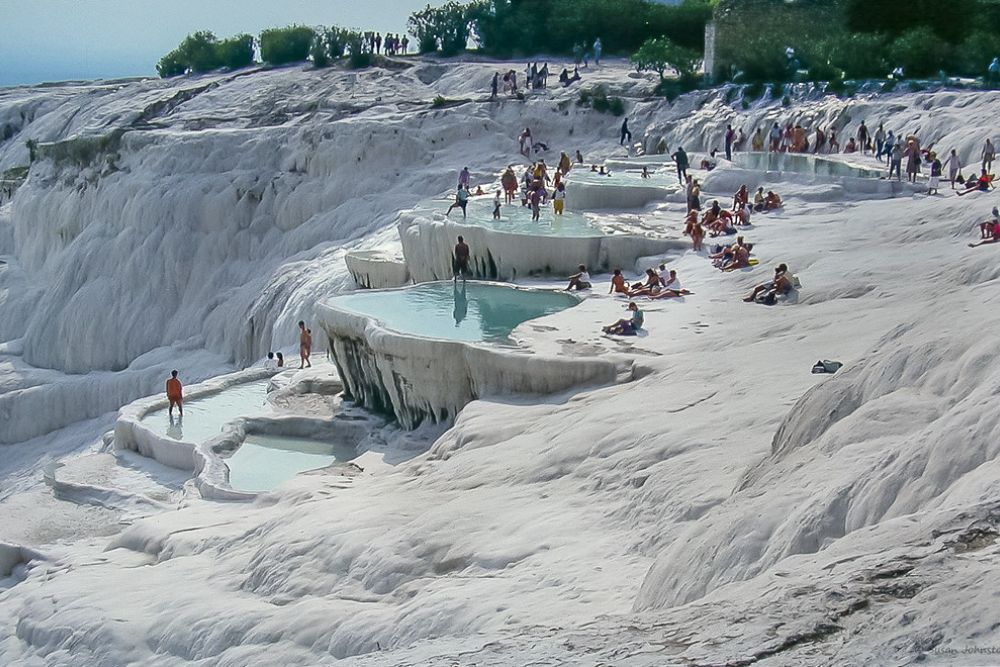
The ‘Cotton Castle’ of Pamukkale features brilliant white limestone terraces formed over thousands of years by calcium-rich hot springs that cascade down the hillside like frozen waterfalls. Visitors can wade through the warm pools while walking barefoot on smooth travertine deposits that feel like natural marble beneath their feet.
The 96°F springs have been flowing here for over 2,000 years, creating one of Turkey’s most photographed natural wonders where ancient Romans once came to cure everything—from eye problems to insomnia.
Like Travel Pug’s content? Follow us on MSN.
Saturnia, Italy
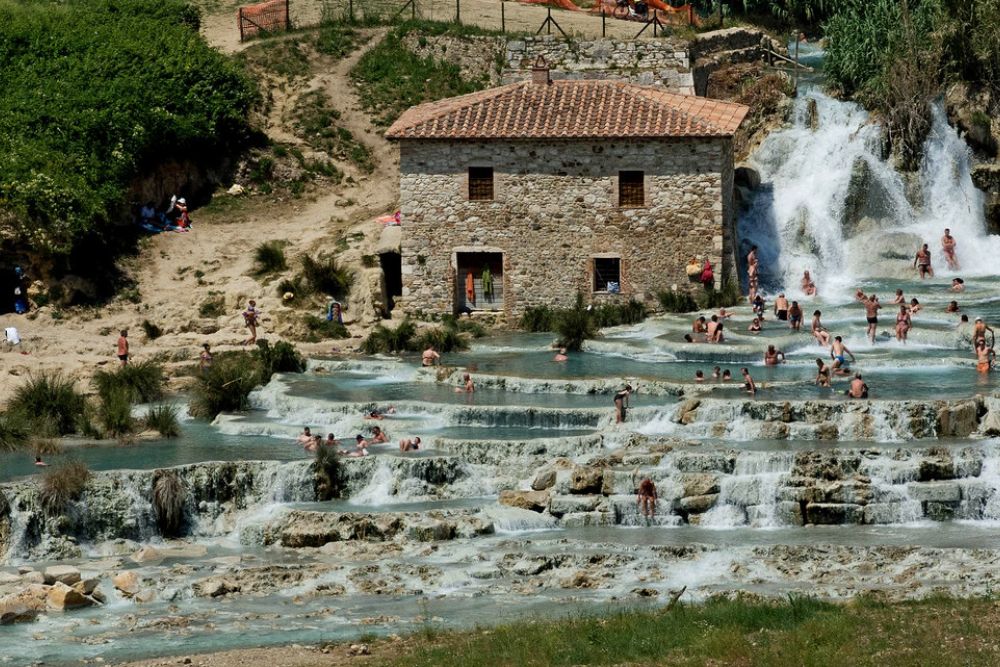
These free natural hot springs in the Tuscan countryside emerge from underground at a constant 99°F, flowing over limestone shelves to create dozens of terraced pools perfect for soaking. The sulfur-rich waters are said to benefit skin conditions and circulation, while the peaceful rural setting offers views of rolling hills dotted with olive groves and medieval villages.
Unlike many thermal destinations, Saturnia’s Cascate del Mulino remains completely natural and accessible 24 hours a day, making it a favorite spot for sunrise and moonlight bathing.
Baden-Baden, Germany
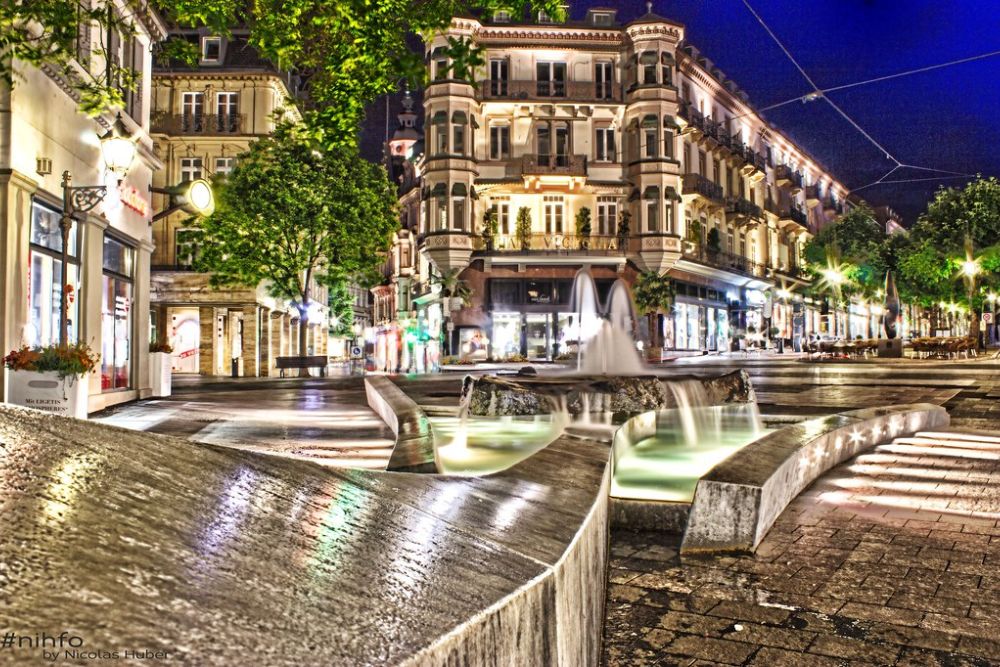
This elegant Black Forest town has been synonymous with thermal bathing since Roman times, when soldiers discovered hot springs that bubble up from 6,500 feet underground at temperatures reaching 156°F. The modern Caracalla Spa combines ancient Roman bathing traditions with contemporary wellness concepts, featuring multiple pools, grottos, and outdoor areas where bathers can enjoy thermal waters year-round.
Baden-Baden’s springs contain over a dozen different minerals, creating water so therapeutically valuable that German health insurance sometimes covers prescribed thermal treatments.
Roman Baths, Bath
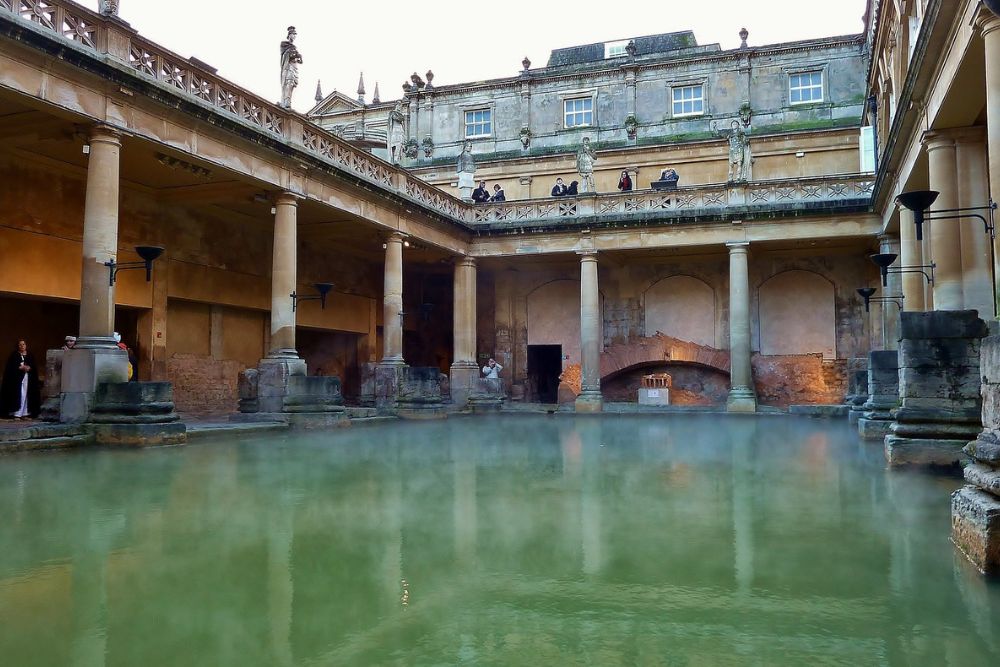
The original thermal destination in Bath, England, showcases nearly 2,000 years of continuous bathing culture around Britain’s only natural hot springs. The Georgian-era architecture surrounding the ancient Roman pools creates a stunning backdrop for experiencing waters that emerge at a steady 114°F from limestone aquifers deep underground.
While you can’t bathe in the original Roman pools, the modern Thermae Bath Spa nearby uses the same natural spring water in rooftop pools with panoramic views over this UNESCO World Heritage city.
Like Travel Pug’s content? Follow us on MSN.
Te Puia, Rotorua
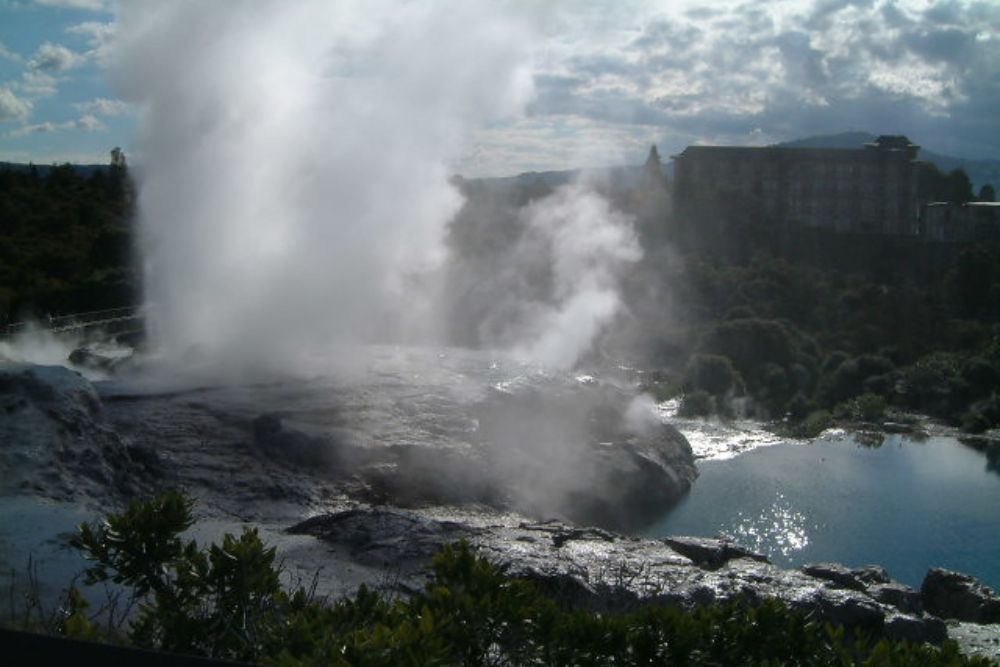
New Zealand’s geothermal wonderland offers natural hot pools fed by the same underground forces that power the region’s famous geysers and mud pools. The mineral-rich waters emerge from the Taupo Volcanic Zone at temperatures up to 212°F before cooling to a perfect bathing temperature in carefully designed pools surrounded by native forest.
Rotorua’s springs contain sulfur, silica, and other minerals that Maori people have used for healing purposes for over 700 years, making this one of the few places where you can experience geothermal bathing in its original cultural context.
Banff Upper Hot Springs, Canada
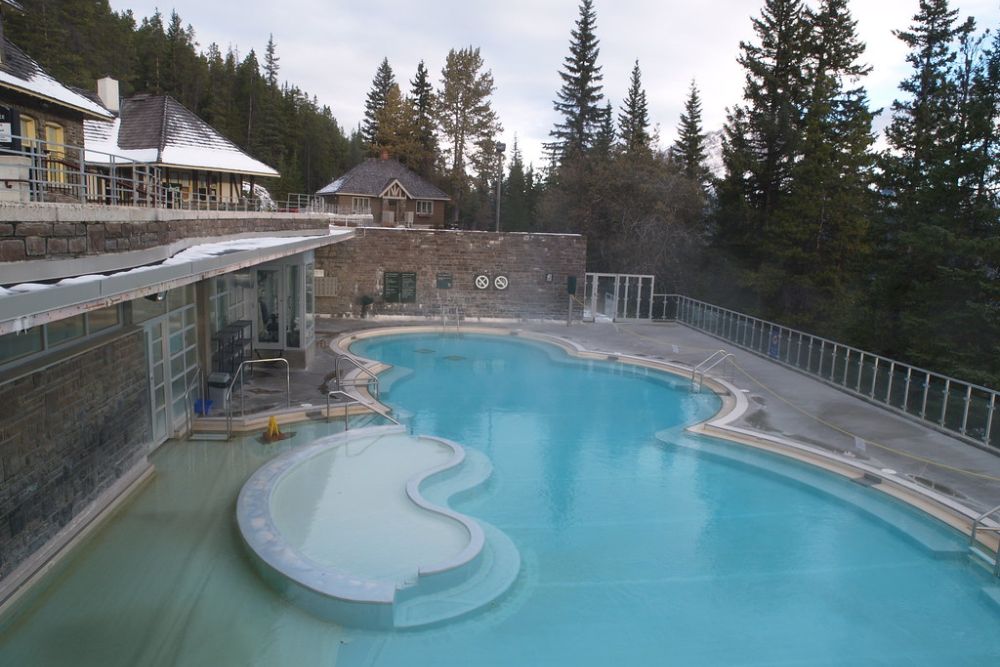
Perched high in the Canadian Rockies at 5,200 feet elevation, these historic hot springs offer therapeutic soaking with some of the most spectacular mountain views in North America. The 104°F waters flow from three underground springs that were discovered in 1883, launching Banff’s development as Canada’s first national park.
The outdoor pool allows year-round bathing even when snow blankets the surrounding peaks, creating the surreal experience of warm soaking while ice crystals form in your hair.
Grand Prismatic Spring, Yellowstone
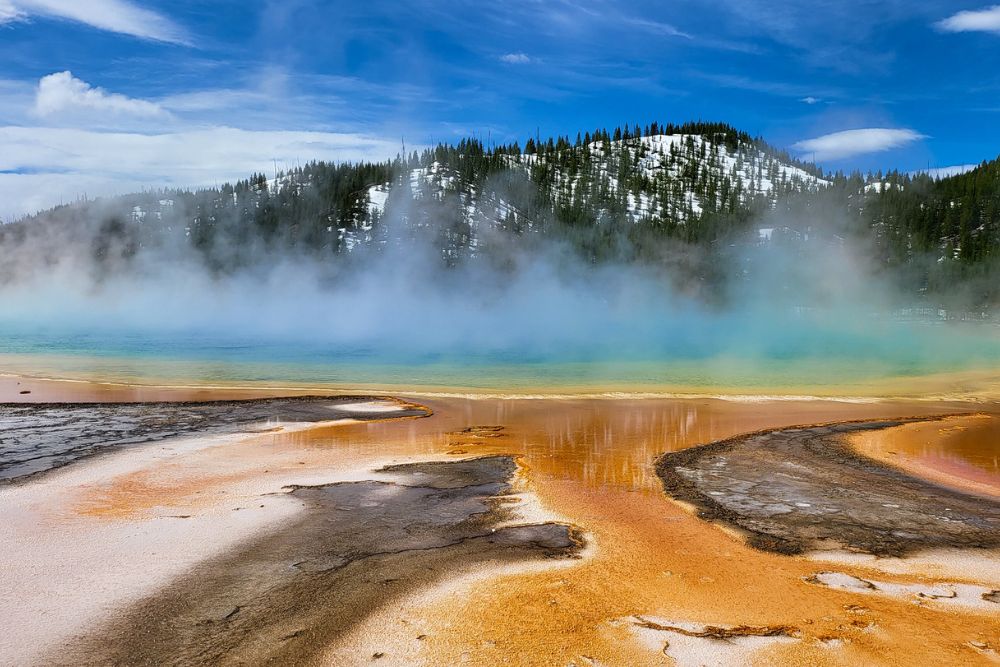
While bathing isn’t allowed in Yellowstone’s famous Grand Prismatic Spring, the nearby Boiling River provides a legal soaking experience where hot springs mix with the Gardner River to create natural hot tubs. The springs emerge at 140°F before mixing with cold river water to reach perfect bathing temperatures along the rocky shoreline.
This hidden gem requires a short hike to reach, but rewards visitors with the chance to soak in natural thermal waters while watching wildlife in America’s first national park.
Like Travel Pug’s content? Follow us on MSN.
Glenwood Springs, Colorado
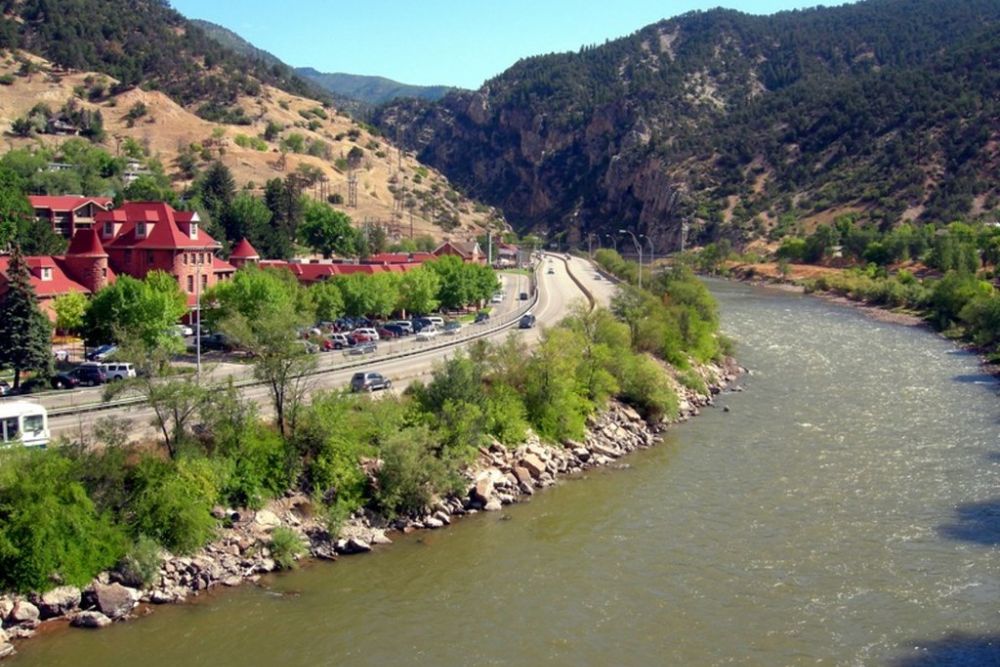
The world’s largest hot springs pool stretches over 600 feet long and maintains a constant temperature of 90-93°F using water from the Yampa Spring, which produces over 3.5 million gallons daily. The resort has operated continuously since 1888, when the railroad brought visitors seeking cures for everything from tuberculosis to battle fatigue.
The mineral-rich waters contain sulfates, chlorides, and bicarbonates that create a silky feel and are said to benefit joint pain and muscle soreness.
Hot Springs National Park, Arkansas

America’s smallest national park protects 47 natural hot springs that emerge from Hot Springs Mountain at an average temperature of 143°F. The historic Bathhouse Row features eight magnificent early-20th-century bathhouses, two of which still offer traditional thermal treatments using the odorless, tasteless spring water that attracted Native Americans for thousands of years.
The springs produce over 700,000 gallons daily of naturally sterile water that requires no chemical treatment, making Hot Springs one of the purest thermal sources in North America.
Kusatsu Onsen, Japan
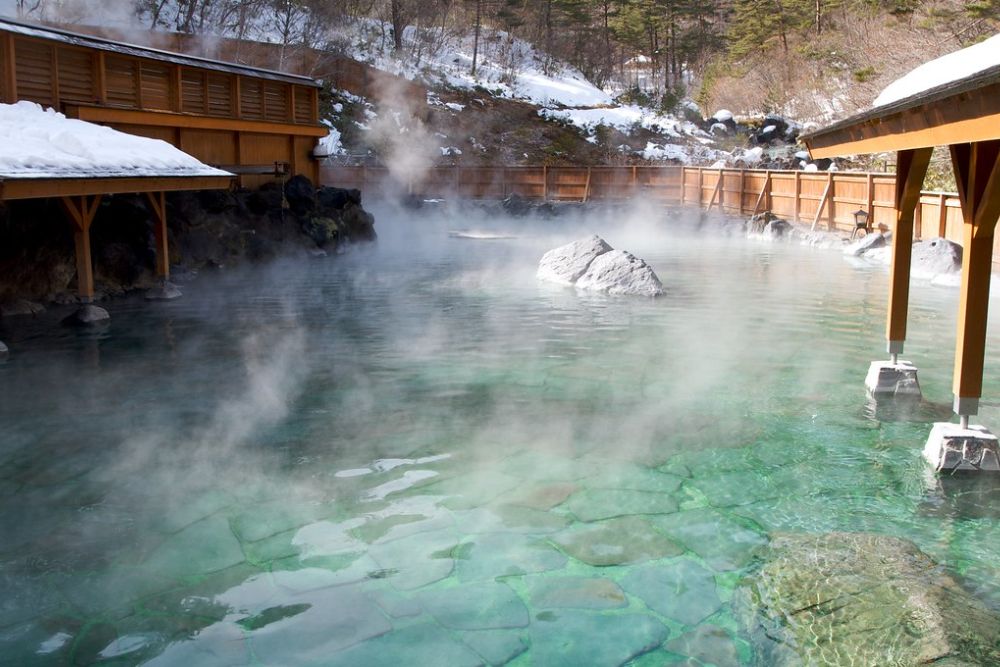
This mountain resort town centers around the Yubatake (‘hot water field’), where spring water emerges at 125-167°F and flows through wooden channels that cool it to bathing temperature. Kusatsu’s waters are famous for their high acidity and mineral content, creating natural antibacterial properties that have made this onsen town legendary for treating skin conditions.
The traditional public baths maintain strict Japanese bathing etiquette, offering visitors an authentic cultural experience alongside some of Japan’s most therapeutic thermal waters.
Like Travel Pug’s content? Follow us on MSN.
Beppu, Japan
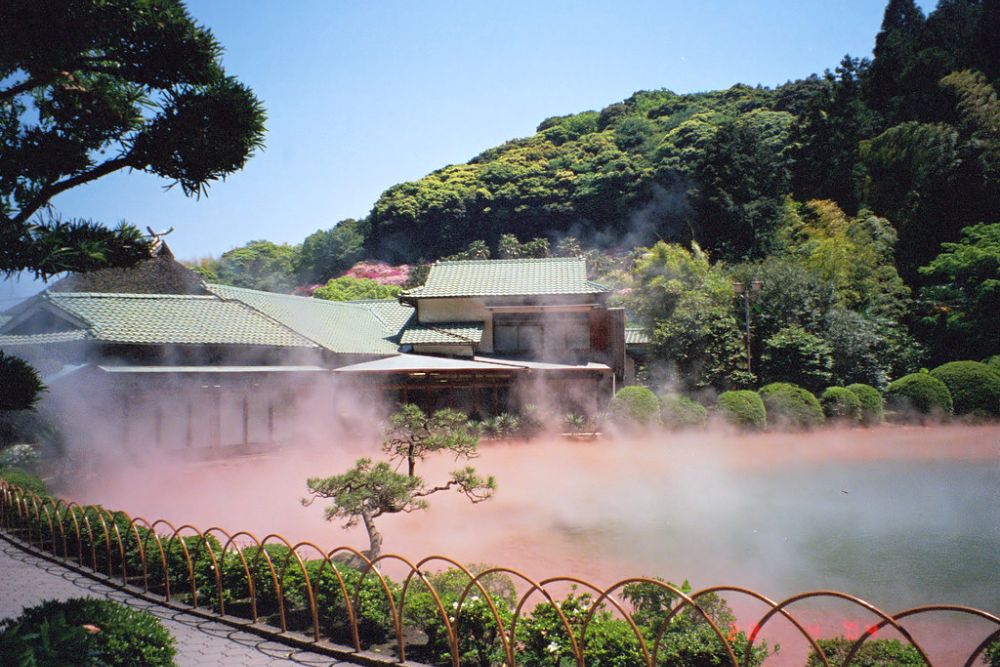
Known as Japan’s hot spring capital, Beppu produces more thermal water than anywhere else in the country, with over 2,300 individual springs feeding everything from public baths to private hotel pools. The city’s eight distinct hot spring areas each offer different mineral compositions and temperatures, ranging from clear alkaline waters to iron-rich red springs that stain the earth orange.
Beppu’s famous ‘jigoku’ (hell) springs are too hot for bathing but showcase the incredible geothermal forces that create this thermal paradise.
Karlovy Vary, Czech Republic
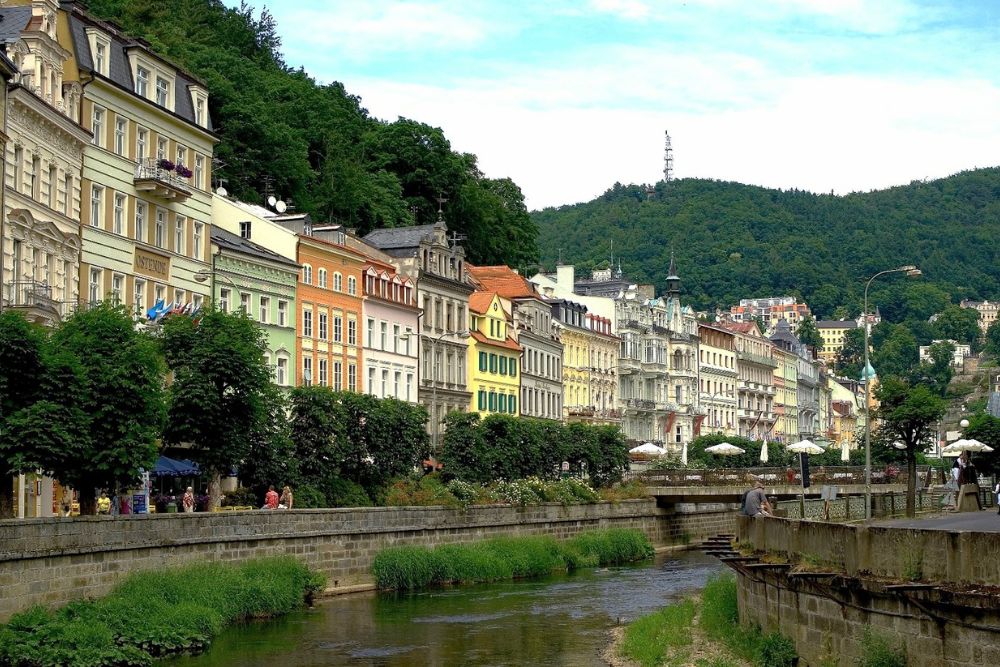
This elegant spa town has welcomed visitors to its 13 thermal springs since the 14th century, when Holy Roman Emperor Charles IV accidentally discovered the healing waters while hunting. The springs emerge at temperatures from 109-163°F, with the hottest—Vridlo Spring—shooting water up to 40 feet in the air from a pressure-fed fountain.
Visitors traditionally drink the mineral-rich waters from special ceramic cups while strolling through ornate colonnades designed to showcase the springs’ healing properties.
Marianske Lazne, Czech Republic
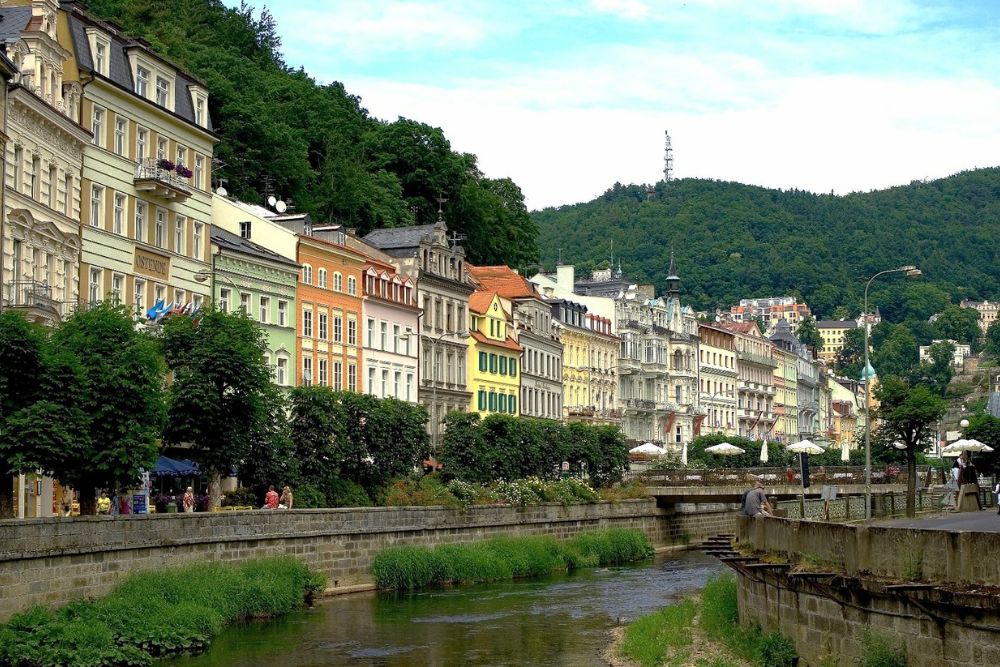
This refined spa resort features over 100 mineral springs that emerge from the surrounding Bohemian hills at various temperatures and mineral compositions. The coldest springs flow at 45°F, while the warmest reach 59°F, requiring heating for bathing but prized for their concentrated mineral content, which includes iron, magnesium, and carbon dioxide.
The town’s elegant 19th-century architecture creates a sophisticated atmosphere where traditional European spa culture continues much as it has for over 200 years.
Like Travel Pug’s content? Follow us on MSN.
Vals, Switzerland
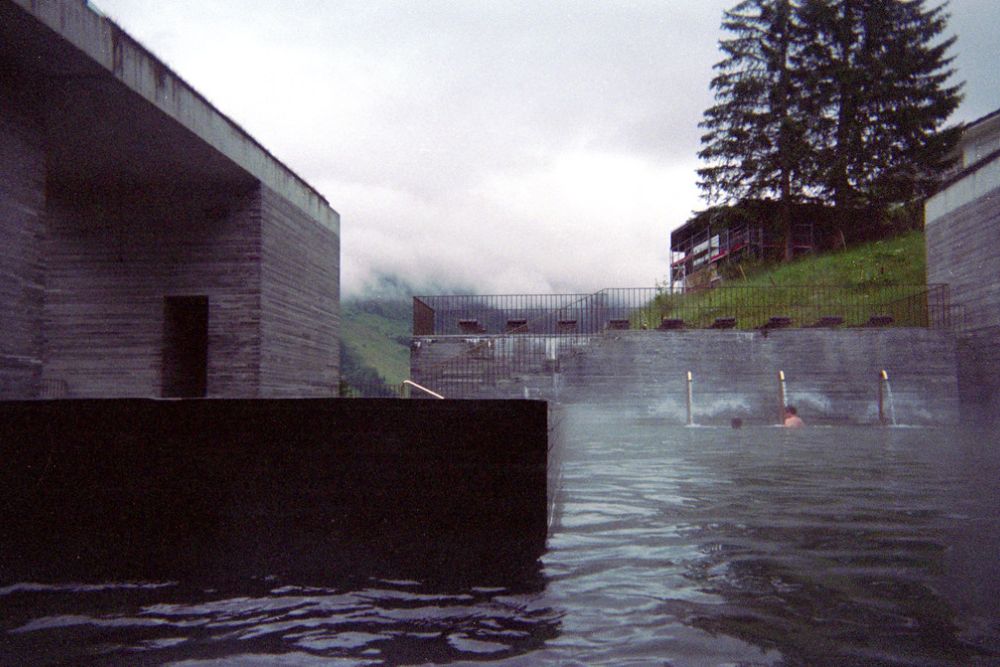
The minimalist Therme Vals, designed by architect Peter Zumthor, creates a temple-like atmosphere around natural springs that emerge from the Swiss Alps at 86°F. The stark stone architecture channels spring water into pools of varying temperatures, with some indoor baths and others opening to mountain views through carefully placed windows.
The geometric design emphasizes the spiritual aspect of thermal bathing, creating spaces for meditation and relaxation that feel like underground caves carved by ancient waters.
Leukerbad, Switzerland
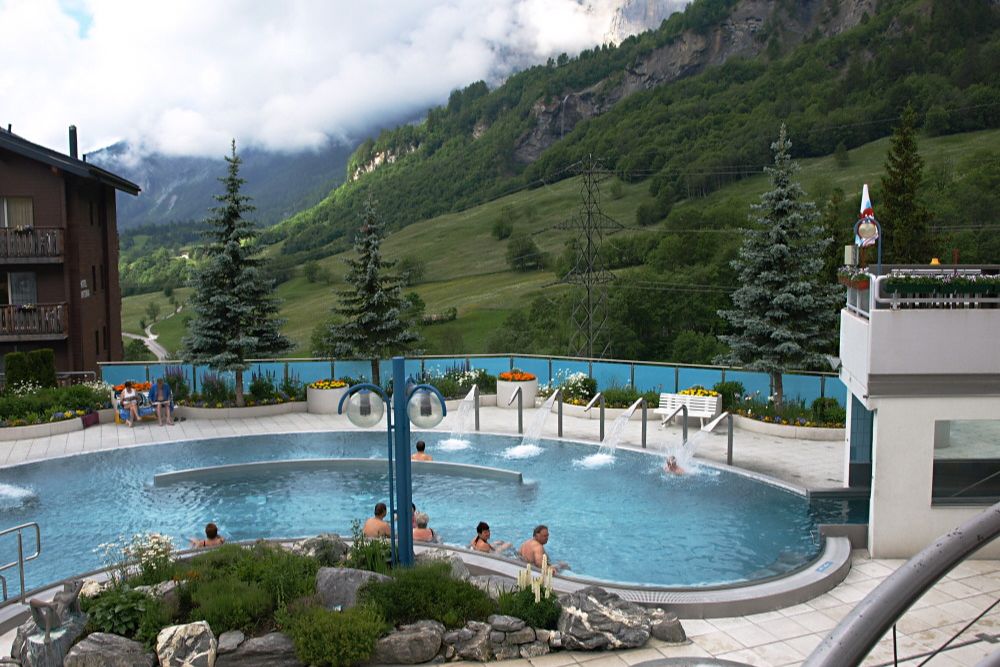
Europe’s largest Alpine thermal resort sits in a dramatic valley surrounded by 13,000-foot peaks, where multiple hot springs emerge at temperatures up to 126°F. The town operates several large thermal complexes that channel spring water into outdoor pools where bathers can soak while surrounded by snow-covered mountains.
Leukerbad’s springs contain sulfur, calcium, and magnesium in concentrations that have attracted everyone from Goethe to modern athletes seeking recovery and healing.
Széchenyi Thermal Baths, Budapest
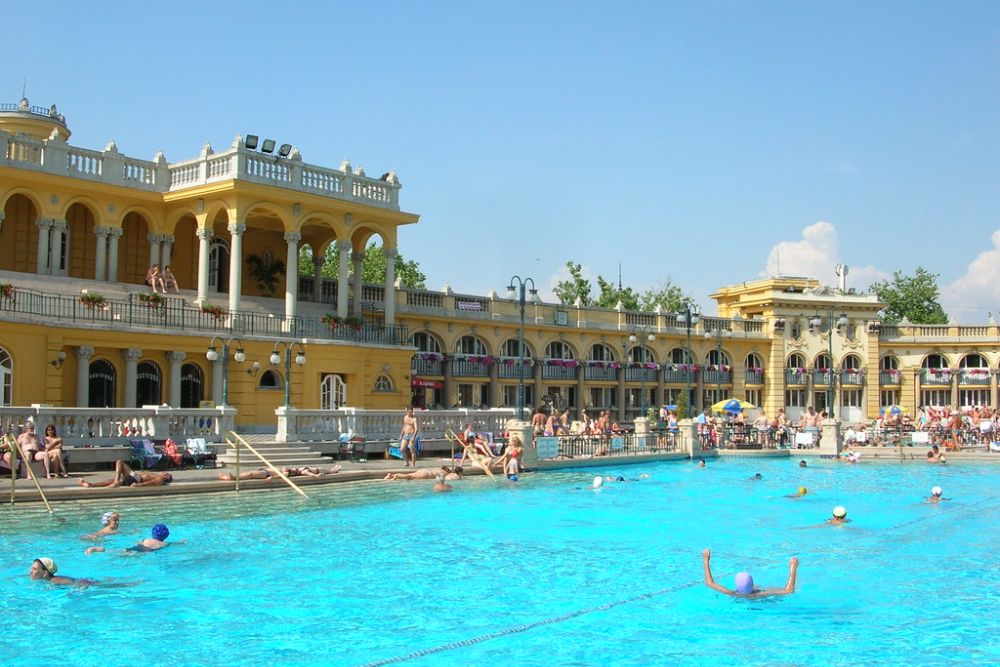
Europe’s largest medicinal bath complex features 18 pools fed by two thermal springs that emerge from 4,000 feet underground at temperatures reaching 171°F. The outdoor pools maintain perfect soaking temperatures year-round, creating the famous sight of bathers playing chess while steam rises around them in winter air.
The springs were discovered in 1879 and contain sulfates, calcium, magnesium, and bicarbonates that Hungarian medical authorities officially recognize for treating joint problems and circulation issues.
Like Travel Pug’s content? Follow us on MSN.
Gellért Thermal Baths, Budapest
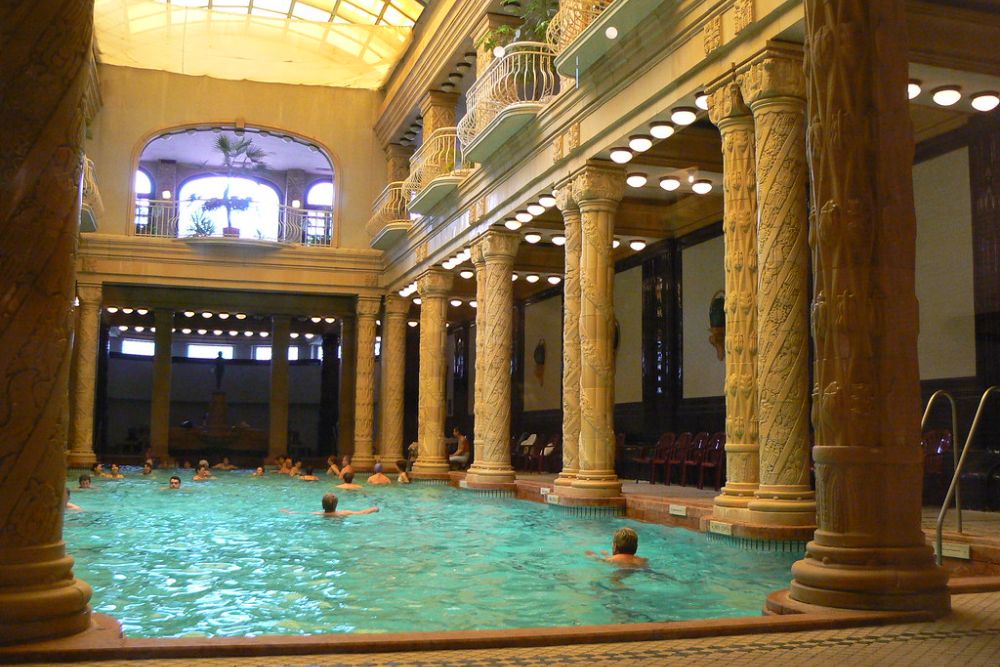
This Art Nouveau masterpiece combines elegant architecture with thermal waters from springs that have been used for bathing since at least the 13th century. The ornate indoor pools feature columns, mosaics, and stained-glass that create a cathedral-like atmosphere around waters that emerge at 104-118°F.
The facility includes traditional thermal pools, swimming areas, and saunas that showcase the sophisticated spa culture that has made Budapest one of the world’s great thermal destinations.
Termas de Pucon, Chile

These natural hot springs sit on the slopes of Villarrica Volcano, where geothermal activity heats groundwater to create perfect soaking pools surrounded by native Araucaria forests. The springs emerge at various temperatures from 95-104°F, feeding rustic stone pools that offer views of the active volcano and Villarrica Lake.
The remote location requires a hike through temperate rainforest, but rewards visitors with some of South America’s most pristine thermal bathing in a setting that feels completely untouched by civilization.
Peninsula Hot Springs, Australia
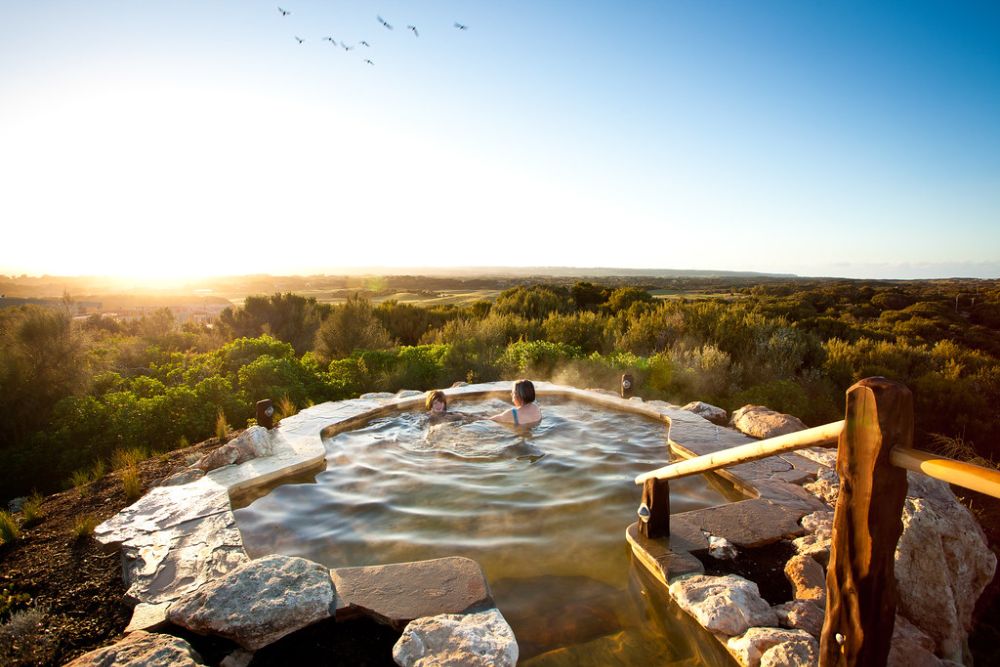
Located on Victoria’s Mornington Peninsula, these geothermal springs emerge from aquifers 2,000 feet underground at temperatures reaching 122°F before being cooled to comfortable bathing temperatures. The springs contain dissolved minerals from ancient rock formations, creating therapeutic waters in a setting of coastal hills and native eucalyptus forests.
The facility combines natural spring waters with modern amenities, offering everything from hilltop pools with bay views to cave-like bath houses that emphasize the underground origins of the thermal waters.
Like Travel Pug’s content? Follow us on MSN.
Where Ancient Waters Meet Modern Wellness
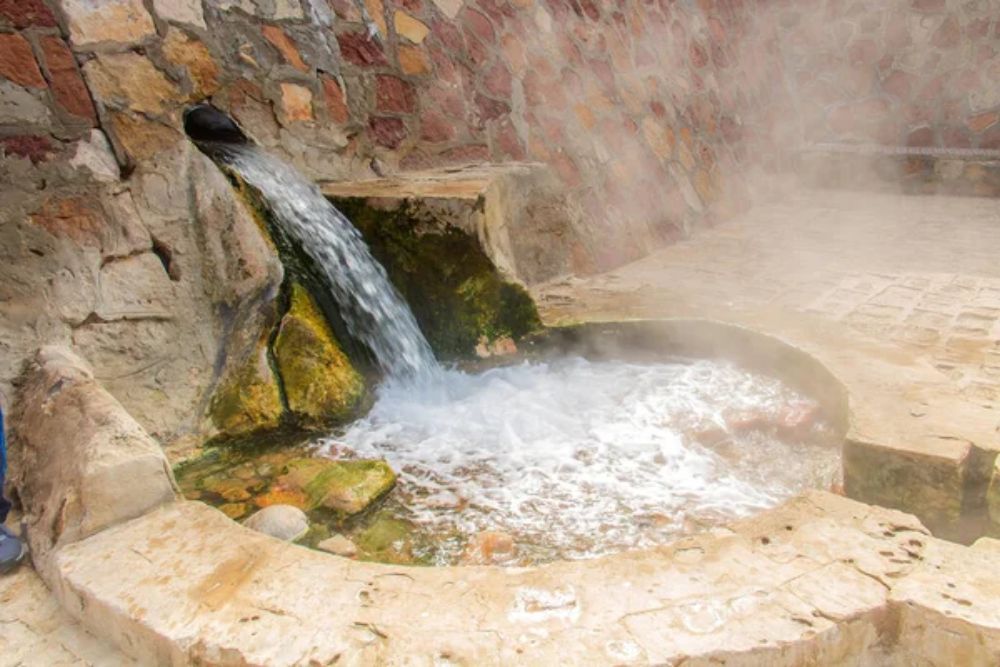
These thermal baths represent humanity’s oldest form of natural therapy, yet they continue to thrive in our modern world because the benefits they offer cannot be replicated artificially. The springs emerge at temperatures from 109-163°F, with the hottest—Vridlo Spring—shooting water up to 40 feet in the air from a pressure-fed fountain.
Each location tells a story of geological forces that have been working for millions of years to create the perfect conditions for healing and relaxation. From Iceland’s volcanic fields to Japan’s mountain valleys, from Roman ruins to cutting-edge architectural marvels, these springs prove that some of nature’s greatest gifts improve with age.
More from Travel Pug

- 20 Best Beach Towns in the Carolinas
- 13 Destinations Where Tourists Regularly Regret Their Trip
- 20 Things You Actually Get in First Class
- 20 Small Airports With Aviation Museums
- 20 Places in the U.S. That Are Perfect for a Reset Trip
Like Travel Pug’s content? Follow us on MSN.
